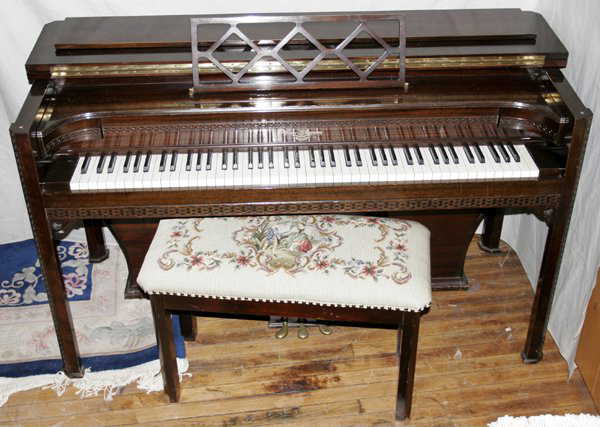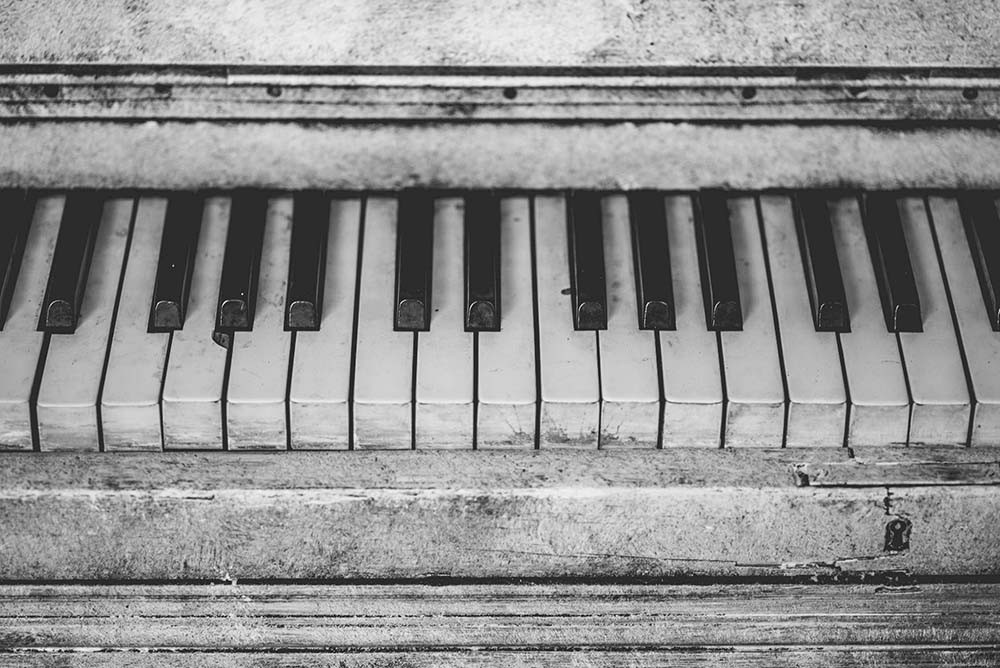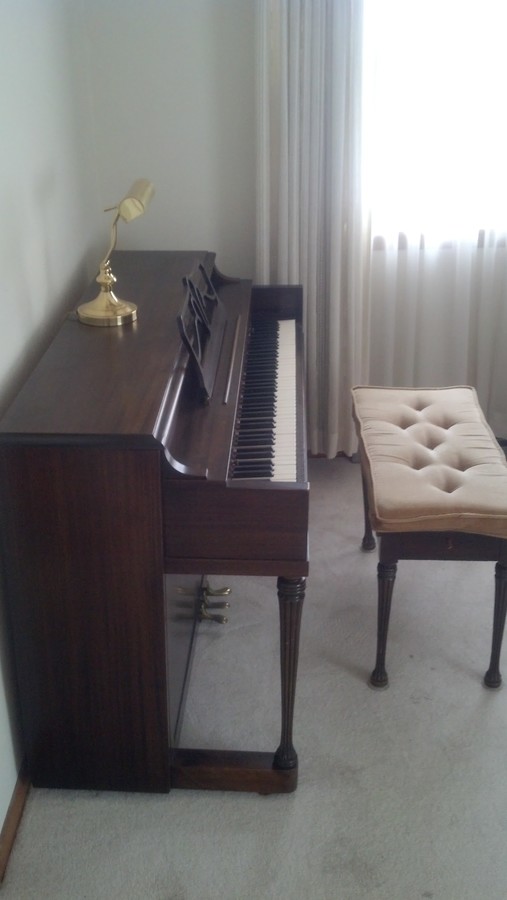Vintage Winter and Company, New York, Musette Piano Serial Number 296531 - made in the 1950's (1952-1953 I think) - still generally in good overall shape. Piano has been sitting for several years and has many dead keys. Gibson Guitars Guitars acquired the Hamilton name in 2001, when they purchased the Baldwin Piano Co. See Acrosonic or Baldwin for additional numbers. Serial numbers are for the first piano made in year shown.
Fischer Piano Serial Numbers
This Virtual Piano Appraisal is designed for those of you who would like to know the approximate value of your piano.
Quick Start:
Click on the type of piano you are researching or continue reading below.
YOU WILL NEED TO GATHER THIS INFORMATION in order to properly describe the piano to a potential buyer or professional Piano Appraiser whether the Piano has value or not. I GUARANTEE that the time you spend will give you valuable insight as to what your piano value may be, and help you decide whether or not the piano has enough value to warrant paying for an appraisal.
You are basically identifying:
What it is. Name, Age, Serial Number, Model, Size and Type. Read on from this point if you are not sure. Once you have gathered this information, do a search for your piano to find out what it may be worth.
If you are selling your piano and have any of the following records, find them. If you are buying a piano, ask for them.
Service Records: Has the piano serviced on a regular basis? Tuning receipts are proof the piano has been well maintained. This will also give the buyer/seller a professional contact to verify the condition and therefore the value of the piano.
Original Purchase Price: If you know it, this will help determine its present value, giving you a starting point in the appraisal formula you will soon find at the end page of this information.
Restored Pianos: A receipt for the work performed is vital to determining the value. It tells us who did the work, what was done, how well it was done, and how long we can expect it to last, all vital factors in determining value.
The condition of the cosmetics will enhance the value of any piano, but the value has much more to do with the interior workings. What would you pay for a beautifully shined used car that needed a new engine and transmission?
If you have no records, and the piano has not been maintained, the condition will need to be verified in order to determine the piano’s value. But first, we need to know more about the piano itself.
Pianos that may still be valuable even in poor condition
Name Brand: You may own a world class name piano, such as Steinway. Even in the worst condition, most Steinway Grand pianos will sell for thousands of dollars, but how many thousands is going to be determined by the pianos condition. Other names of valuable pianos would include: Mason and Hamlin, Boosendorfer, Bechstein, Baldwin, Blunther, Sauter, to name only a few. A quick web search will reveal if your piano’s name alone carries value. If the piano has a name which carries such value, a Professional Appraisal would be well worth it. CLICK HERE or continue…
Ornate or Unusual Case Design: If your piano is very ornate with carvings and inlays, or a very unusual case design, this can make the piano more valuable no matter what the name of the piano is.
This example below is common Winter Spinet piano normally worth very little, but the ornate carvings and inlays on the case give it much more value than an ordinary case.

What type of piano do you have?
Piano serial numbers identify the (1) age of your piano, the (2) piano's year of manufacture, as well as (3) the circumstances surrounding the production of your piano, including factory history, manufacturing processes, and company ownership and oversight.
You can look up a free piano serial number history search from this page (see list of manufacturers, below).
Piano Serial Numbers:
Location, location, location...
Piano serial numbers usually have five to seven digits, but may have fewer or more, depending on the manufacturer and age of your piano. Serial numbers may also include a letter as well.
Here are the TOP FIVE places to locate the serial number of your spinet, console, studio, or upright piano:
Serial number locations are found:
1) On the piano’s cast iron plate. After lifting up the lid, look along the top front area of the plate. The serial number may be to the right or the left, or in the middle.
2) Under the opened lid on the ledge, stamped on a little plaque, to the right or to the left.
3) Stamped on the back of the piano; near the top of the wood frame.
4) Printed on one of the hammers, found on either end of the piano (newer or imported pianos).
5) Printed on one the keys - behind the nameboard, inside the piano (newer or imported pianos).
If you cannot find the serial number in any of the locations listed on this page, please watch the video below, to help find more piano serial number locations.
Grand Piano Serial Numbers
Where Are They Found? ...
Here are the TOP FIVE places to locate the serial number of your BABY GRAND or GRAND piano:
(See this link for a detailed picture of where to look)
Note: You may have to remove the (1) music desk first and (2) gently clean out any dust from your piano's plate [using a soft dry cloth + vacuum hose] before you can find these numbers.
Serial number locations are found:
1) On the piano’s cast iron plate, near the tuning pins, as you face the keys. Look to the right or to the left.
2) The Capo d'astro bar. Located on the right, this acts as a 'bridge' to the 'beams' of the cast iron plate.
3) On the piano's soundboard (see link above for a diagram).
4) On a metal plate underneath the piano's top lid, near the strings and soundboard.
5) Immediate interior [front]: On the back of the [a] keyslip (long wooden ledge, runs along the front/bottom of the piano's keys. The serial number is often hidden and stamped on the other side, facing the keys). On the front of the [b] action frame (after the keyslip is removed), or stamped on [c] one or both of the cheek blocks, viewed to the right and left of the piano's keyboard.
On older pianos, you may find 3-5 screws, underneath the keyslip, that will need to be removed (or, simply lift up, if no screws are present) to view the action frame. The serial number may be stamped on the front of the frame's wooden base, immediately under the keys.
To the right and left of the keys are two end cheek blocks, which are each secured down with a giant bolt or screw, which passes through the piano's keybed, both of which must be removed, to access the interior of the piano (see video, above).

Caution: When unscrewing and removing the cheek blocks, do not mistake the piano's leg screw/bolt, with the cheek block's screw/bolt.
Also, be careful not to drop the cheek blocks once they are removed, which can gouge and permanently damage the piano's case, and the block's delicate condition.
To recap: the piano's serial number may be hidden on the back of the piano'skeyslip (immediately in front of / below the keys), on the action's frontkeyframe, on the cheek blocks (each side), or within the action itself, once removed from the piano.
Scroll down below to find the (1) manufacturer of your piano, and then (2) click on the link to find the serial number.
(Please be patient as we are updating this page on a daily basis. We invite you to SUBSCRIBE to this page, and to use the search box above, as serial numbers are being updated and added on an ongoing basis.)
Baldwin | Sohmer
Yamaha
|
Winter And Company Piano New York
Thinking of purchasing a Yamaha Piano? Visit our Grey Market Pianos page to find out more before making that purchase!
The Pierce Piano Atlas, 12th Edition now in hardcover format, provides a wealth of information about the piano manufacturing industry. Over 12,000 piano names are included, some dating back to the early eighteen hundreds. This guide provides references to serial numbers, dates of manufacture, factory locations, a brief history of many manufacturers and other pertinent information.
Winter And Company Piano Value

The Piano Book is the bible of the piano marketplace. An indispensable resource to buyers and owners of pianos, amateur and professional pianists alike. This book evaluates and compares every brand and style of piano sold in the United States.
Information on how the piano works, ages, and the difference between different piano brands is discussed in great detail. There is also a wealth of diagrams of parts, information on manufacturing, maintenance, moving and storage, inspecting new and used pianos, the special market for Steinways, and sales gimmicks to watch out for.
Playing Piano for Pleasure is a practical guide to learning and playing the piano for fun! Includes material from the author's interviews with master pianists, artists, and writers. The result is a book that should be cherished for years to come.
SUBSCRIBE TO OUR FREE EZINE:
Support our site at no cost to you. Make your Amazon purchases by clicking through this link, here.
